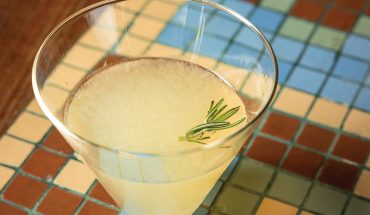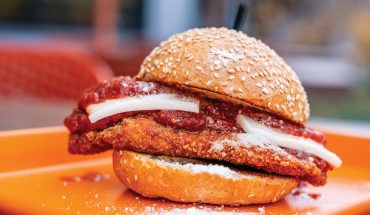by Kaitlyn Goalen
Root vegetables are some of the best cooking muses round. Unlike tomatoes or strawberries, which are beautiful and require minimal effort in the pursuit of something delicious, turnips, rutabagas and their kin force us to get creative.
This is partly due to the season. We rely on them most in the dead of winter. Beyond that, roots are tough by nature, with rough exteriors that require a leap of faith and some effort on the cook’s part to coax out their subtle flavors.
The reigning monarch of our region’s roots has to be the sweet potato. North Carolina is a leader in the production of this spud, and N.C. State has even pioneered the development of new varietals (including the now-famous Covington). Recently, I came across one new to me: Called the Batus, this sweet potato’s defining characteristic is its ugliness. Small and sunken with four bulging veins running lengthwise along its body, it elevates the already sorry plight of root vegetables.
I bought a few, along with some turnips and rutabagas, from the State Farmer’s Market, but started to seriously question my decision when I got home. As I peeled the sweet potatoes’ skins, there was no trace of deep orange, only off-white flesh.
As is often the case with difficult things, the Batus proved its worth in the oven. Slicked with some salt and fat, the sugar-rich slices caramelized and deepened, such that each piece tasted like butterscotch with terroir.
I could have polished off the entire tray straight from the oven, but instead I mixed them with the other roots and stuffed them in hand pies.
I typically make these pies on the weekend and freeze them, then warm one up for a satisfying and quick lunch during the week. To freeze them: Place unbaked pies on a sheet tray in the freezer for one hour. Then transfer them to a gallon-size freezer bag and return to the freezer. To bake frozen pies, set them on a baking sheet and cook at 375 degrees for 50 minutes.
Three Root & Lamb Hand Pies
Makes 6
For the filling:
8 ounces (two medium) rutabaga, peeled and sliced into wedges
8 ounces (one large) turnip, peeled and sliced into wedges
8 ounces (one medium) sweet potato, such as Batus
3 tablespoons unsalted butter, melted
1 tablespoon olive oil
1 teaspoon fresh thyme leaves
Salt and freshly ground pepper
3 cardamom pods
1 star anise pods
½ pound ground lamb
1 red onion, diced
2 cloves garlic, minced
1 teaspoon Dijon mustard
¼ teaspoon ground cinnamon
½ cup chicken broth
½ cup sherry
For the pastry:
½ cup (1 stick) cold unsalted butter, cut into cubes
1 ¼ cups all-purpose flour (plus more for dusting)
Ice water
1 teaspoon salt
1 egg
Preheat the oven to 350 degrees. In a large bowl, combine the rutabaga, turnip and sweet potato wedges, butter, olive oil and thyme. Season well with salt and pepper, and toss to coat the vegetables. Transfer to a baking sheet and cook until fork tender, about 30 minutes.
In a skillet, toast the cardamom and star anise. Break upon the cardamom pods and place the seeds and the star anise in a mortar and pestle. Grind finely and set aside.
In a large skillet over medium heat, add the lamb and cook until no longer pink, about eight minutes. Transfer to a bowl. Add the red onion and cook until softened, about four minutes. Add the garlic and cook for one more minute. Transfer the onion mixture to the bowl with the lamb. Add the reserved spices, the mustard and cinnamon. Season to taste with salt and pepper.
When the vegetables are done roasting, transfer them to a blender or a food processor and add the broth and sherry. Pulse until smooth, then add the root vegetable puree to the lamb mixture. Combine well and set aside.
Make the pastry: Preheat the oven to 400 degrees. Combine the flour and salt in a large bowl. Cut the butter into the flour with a pastry blender or in a food processor until no piece of butter is larger than a pea. Add six tablespoons of ice water to the flour mixture, using your hands to bring the mixture together. Continue to add ice water by the tablespoon until the mixture holds together in a ball. Refrigerate the dough for at least 30 minutes.
Roll out the dough on a floured surface to 1/8-inch thickness. Cut out circles with a diameter of 7½ inches, then gather up the remaining dough and roll out again to get more circles. Repeat until you have six circles. In a small bowl, beat the egg well.
Place ¾ cup of lamb filling in the bottom third of each circle, and brush the outline of the circles with egg. Fold the circles in half to form a crescent around the dough and press down on the edges to seal (you can crimp with a fork if you’d like).
Place the pies on a parchment-paper-lined baking sheet and bake for 15 minutes. Then lower the heat to 350 degrees and bake for an additional 20 minutes. Serve warm.




